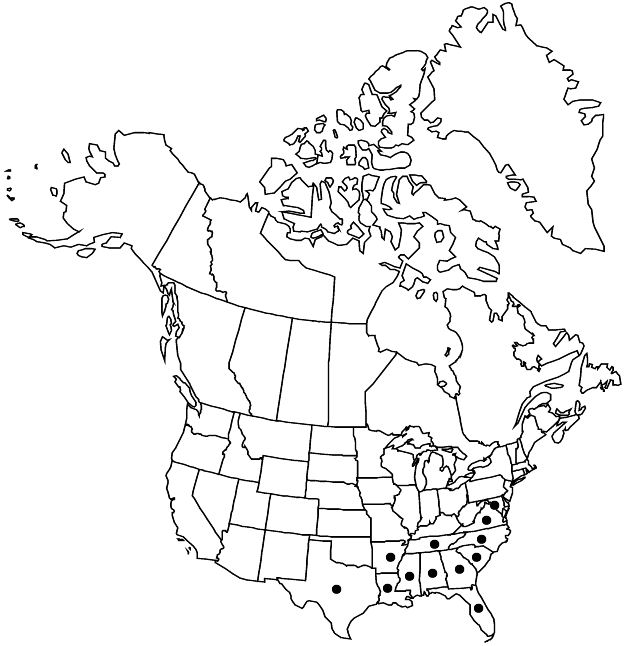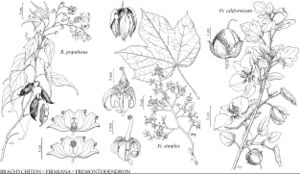Difference between revisions of "Firmiana simplex"
U.S.D.A. Bur. Pl. Industr. Bull. 142: 67. 1909.
FNA>Volume Importer |
FNA>Volume Importer |
||
| Line 10: | Line 10: | ||
|special_status={{Treatment/ID/Special_status | |special_status={{Treatment/ID/Special_status | ||
|code=F | |code=F | ||
| − | |label= | + | |label=Illustrated |
}}{{Treatment/ID/Special_status | }}{{Treatment/ID/Special_status | ||
|code=I | |code=I | ||
| Line 18: | Line 18: | ||
|name=Hibiscus simplex | |name=Hibiscus simplex | ||
|authority=Linnaeus | |authority=Linnaeus | ||
| + | |rank=species | ||
|publication_title=Sp. Pl. ed. | |publication_title=Sp. Pl. ed. | ||
|publication_place=2, 2: 977. 1763, name and type proposed for conservation | |publication_place=2, 2: 977. 1763, name and type proposed for conservation | ||
| Line 24: | Line 25: | ||
|name=Firmiana platanifolia | |name=Firmiana platanifolia | ||
|authority=(Linnaeus f.) Schott & Endlicher | |authority=(Linnaeus f.) Schott & Endlicher | ||
| + | |rank=species | ||
}} | }} | ||
|hierarchy=Malvaceae;Malvaceae subfam. Sterculioideae;Firmiana;Firmiana simplex | |hierarchy=Malvaceae;Malvaceae subfam. Sterculioideae;Firmiana;Firmiana simplex | ||
| Line 48: | Line 50: | ||
-->{{#Taxon: | -->{{#Taxon: | ||
name=Firmiana simplex | name=Firmiana simplex | ||
| − | |||
|authority=(Linnaeus) W. Wight | |authority=(Linnaeus) W. Wight | ||
|rank=species | |rank=species | ||
| Line 63: | Line 64: | ||
|publication title=U.S.D.A. Bur. Pl. Industr. Bull. | |publication title=U.S.D.A. Bur. Pl. Industr. Bull. | ||
|publication year=1909 | |publication year=1909 | ||
| − | |special status= | + | |special status=Illustrated;Introduced |
| − | |source xml=https://jpend@bitbucket.org/aafc-mbb/fna-data-curation.git/src/ | + | |source xml=https://jpend@bitbucket.org/aafc-mbb/fna-data-curation.git/src/f50eec43f223ca0e34566be0b046453a0960e173/coarse_grained_fna_xml/V6/V6_342.xml |
|subfamily=Malvaceae subfam. Sterculioideae | |subfamily=Malvaceae subfam. Sterculioideae | ||
|genus=Firmiana | |genus=Firmiana | ||
Revision as of 22:04, 16 December 2019
Trees single or multi-stemmed, 10–15(–20) m; bark green with paler greenish white vertical stripes, becoming gray or chalky white, smooth. Leaves: petiole 15–30(–40) cm; blade palmately 3–5-lobed, rarely unlobed, broadly ovate, lobes often constricted at base, (8–)12–40 × (12–)20–50 cm, membranous, apex acute or acuminate, surfaces abaxially minutely stellate-puberulent with domatia in axils of primary and secondary veins, adaxially glabrous. Inflorescences terminal, erect, paniculate, 20–50 × 20–100 cm, often borne on leafy branches; bracts caducous. Pedicels articulated, 2–3(–5) mm. Flowers: calyx 7–9(–10) mm, divided nearly to base, tube cupuliform, lobes reflexed, lanceolate-oblong, abaxially puberulent, adaxially villous in throat proximally, androgynophore exserted, glabrous. Staminate flowers: androgynophore to 2 cm; anthers irregularly fascicled; pistillode obscured by anthers. Pistillate flowers: androgynophore to 0.5 cm; ovary densely stellate-pubescent. Follicles pendant, ovate-lanceolate, 6–11 × 2.5–4.5 cm, abaxially stellate-puberulent or glabrous. Seeds (1)2–4, 6–7 mm diam. 2n = 40.
Phenology: Flowering May–Aug; fruiting Jun–Oct.
Habitat: Roadsides, thickets, mixed deciduous woods
Elevation: 0–300 m
Distribution

Ala., Ark., D.C., Fla., Ga., La., Miss., N.C., S.C., Tenn., Tex., Va., Asia (China), introduced also in Europe, e Asia (Japan).
Discussion
Firmiana simplex has long been cultivated in Japan and was brought to Europe by the mid eighteenth century. André Michaux reportedly introduced the species to North America before 1796 through his garden in Charleston, South Carolina (J. P. F. Deleuze 1804) and it is grown today as an ornamental or street tree in at least 20 states. The species is considered an invasive tree in the southeastern states, but only a few occurrences of its being naturalized have been well documented.
Selected References
None.
